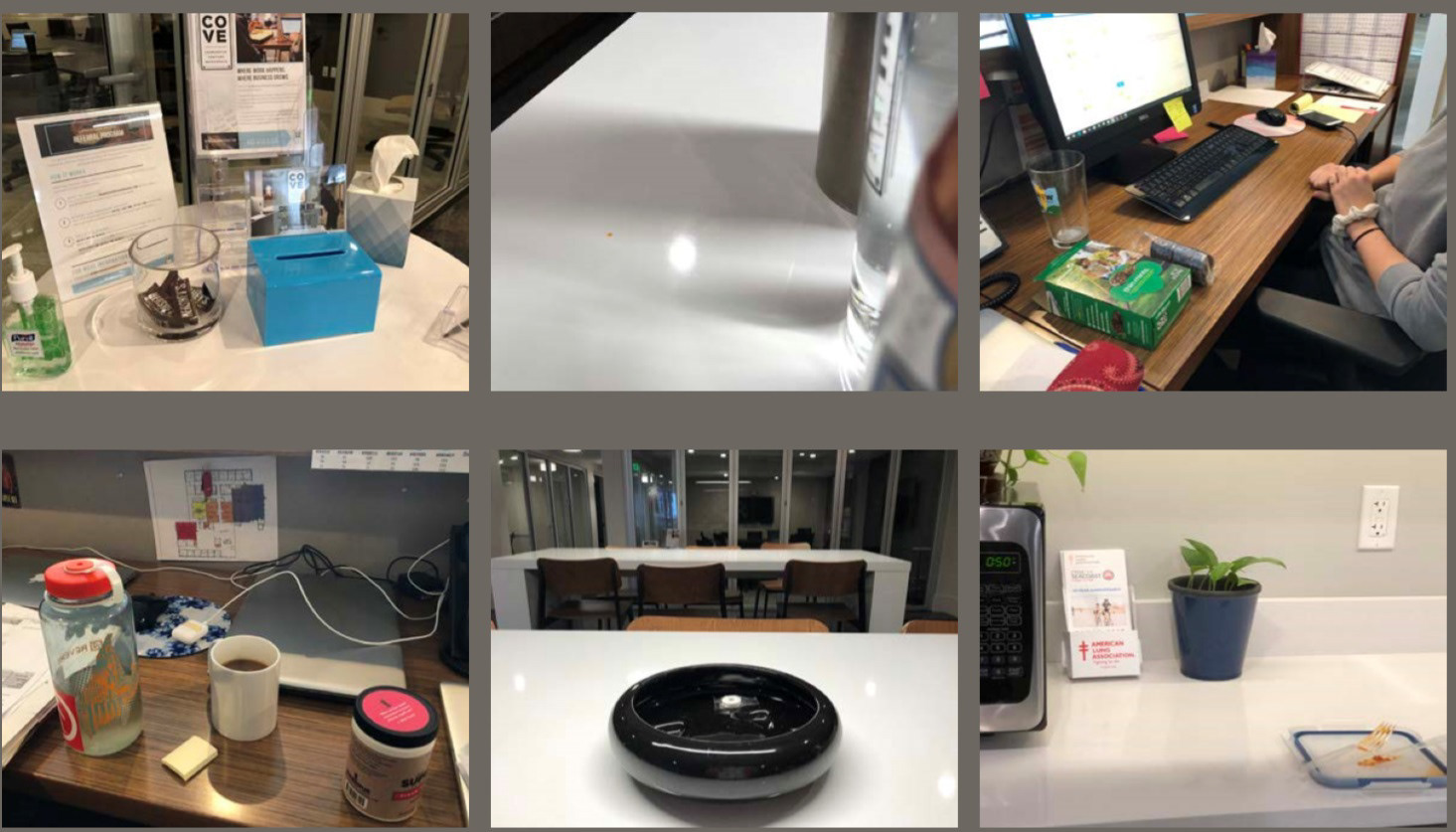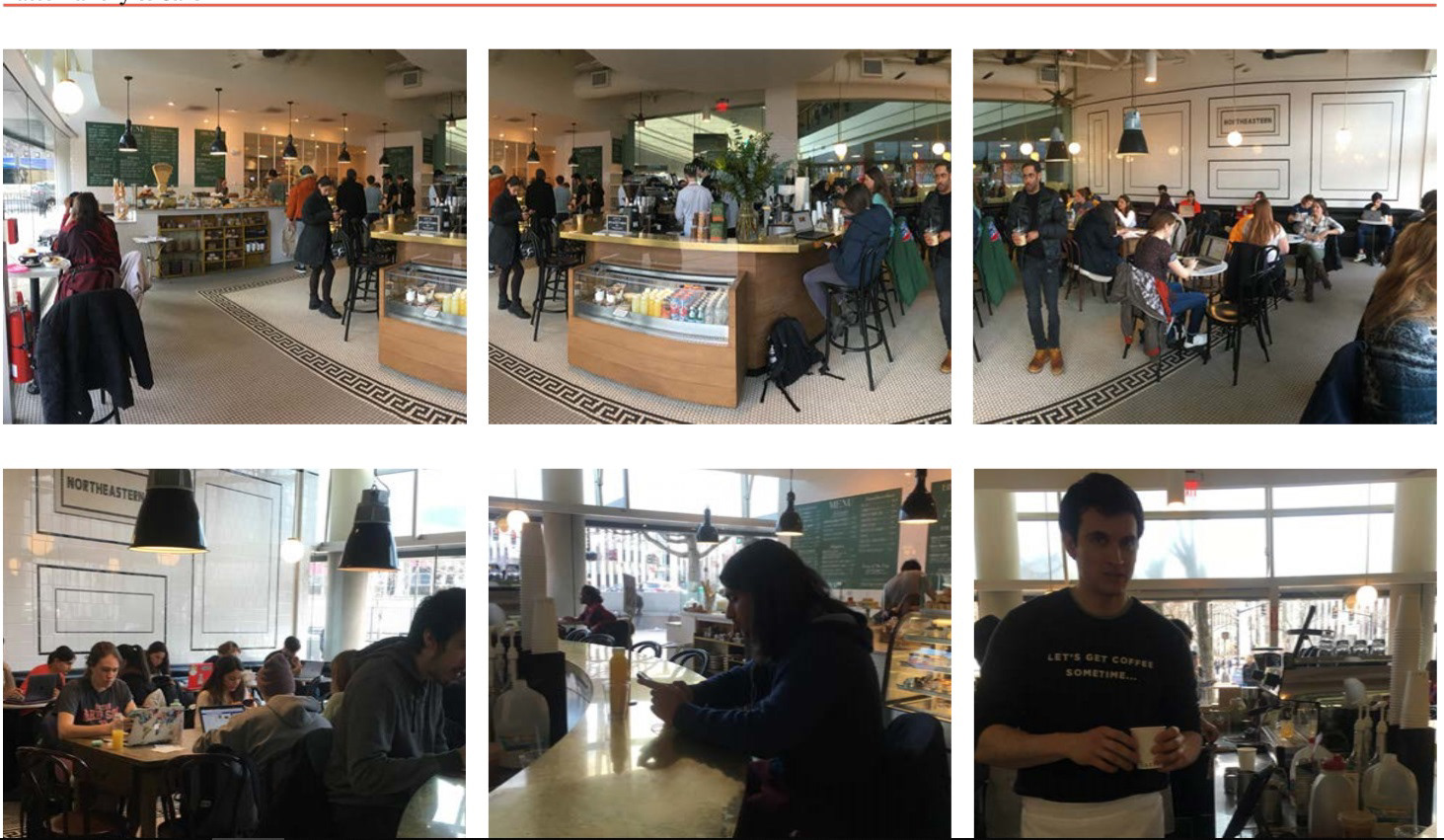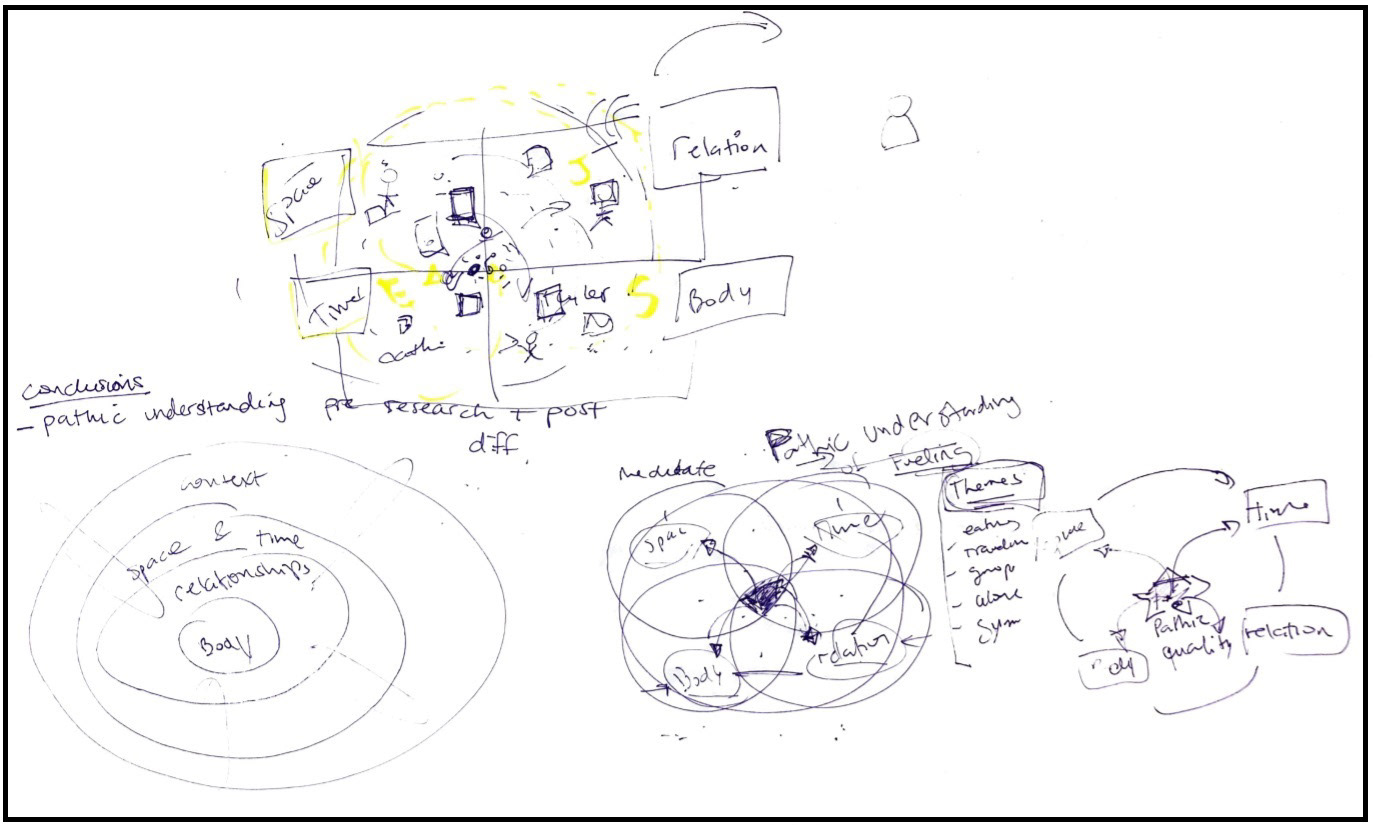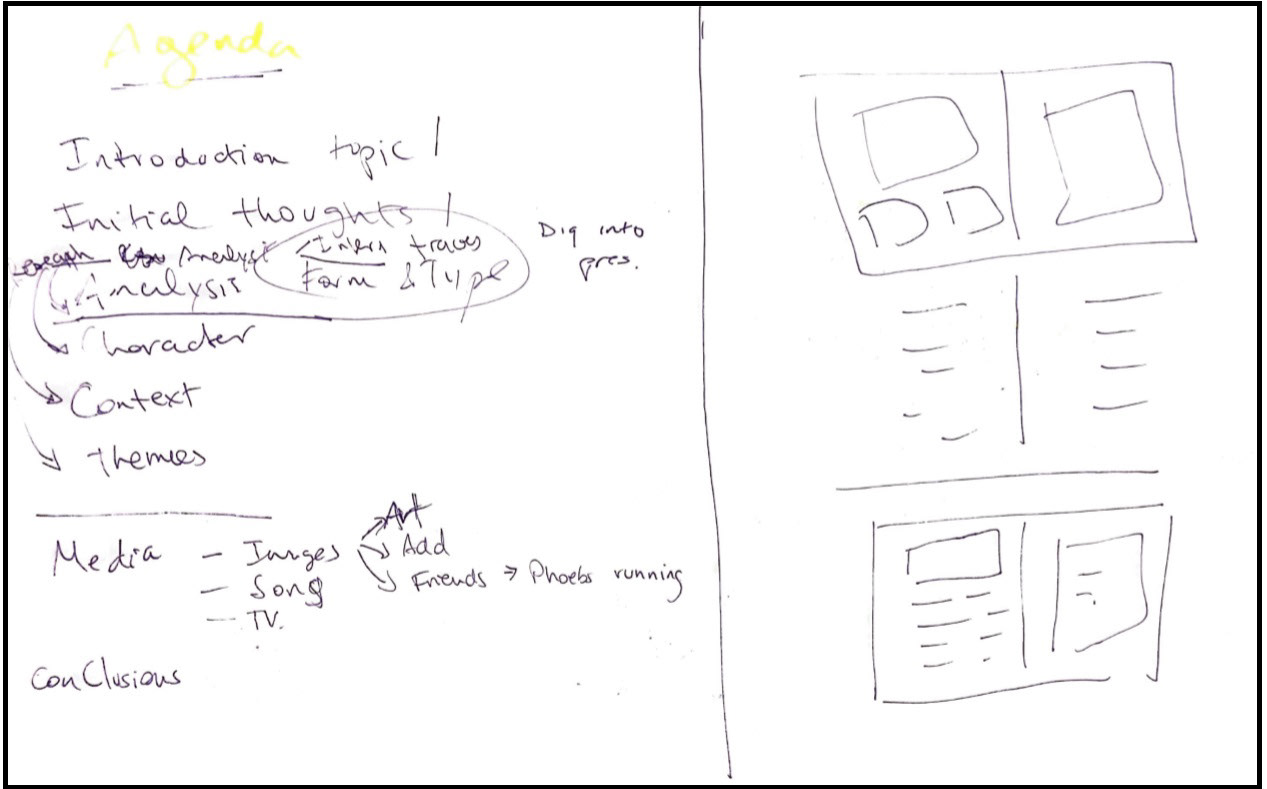How would you define “fueling” yourself? What are some personal routines or habits you can identify surrounding fueling? Does fueling drive towards conviviality?
These are some of the questions me and my partner decided to investigate and research as part of understanding a mundane and everyday activity, such as "fueling" ourselves.
Maybe thanks to asking questions to our interviewees, we brought them from their subconscious to a conscious understanding of what fueling is and how the context of fueling really matters.
Methods
Our research approach was two pronged. To kick things off, we immersed ourselves in the impersonal research method of physical trace observation. We zoomed in on the practice of eating as fueling, as well as fueling in groups to help frame our trace photo studies. For our personal research method, we conducted individual focused interviews with six viable candidates. We developed an interview guide to more easily guide our subjects through a series of building questions on fueling themselves. We spent a lot of time shaping our interview questions to ensure they were both broad enough and specific enough to extract helpful data, but also avoid inadvertently inserting interviewer bias.
Traces Observation
Our physical trace observations occurred in four different locations including a cafe, a studio, a coworking space and another college.




Focused Interviews
We chose people in different age groups and genders, with different backgrounds and life circumstances to gain a widespread understanding of the experience of fueling. Four out of six interview subjects were married males between the ages of 32-55. Two out of six interview subjects were unmarried females between the ages of 50-74. See below guide that we used to frame each of our focused interviews.
Findings
After our interviews and trace observations we learned that that there are four main pathic qualities that are accounted for in phenomenological writings of an experience. Our research helped us uncover the different types and forms of this experience, it helped us to see fueling with different lenses and perspectives, and gave us a new understandings of this practice. The manifestation of fueling took form in eating alone or in groups (relations), drinking, exercising (body), relaxing, meditating (body), traveling, doing things people like, being social, watching Netflix, listening to music, and so forth. Our understanding was exponentially increased by analyzing our data.
Even something as simple as eating has different meanings to different people: some might eat on-the-go because of time constraints (temporal), some might eat individually to try to get some work done, some might eat alone just because they like having a moment to themselves, and some prefer to eat in groups as they get energy from socializing and enjoying time with friends and family (relation). They refer to this moment as a escape or “get away” from reality. It was really interesting to discover all the different meanings that people attribute to such a simple practice that is usually done on “automatic pilot” without much thought. While talking to our interviewees we becamed intrigued by how easy it is to live our lives without paying any conscious attention to the little things.
Then, we realized, by interviewing people, we were able to help them make connections to their own daily lives, allow them to go back to being present, and assist them with “in-being.” By doing that, we facilitated a deeper and more meaningful understanding of their fueling practices, as well as the actions and reactions they might be involved in. Only by reflection we could then achieve true understanding. Another finding was that people fuel themselves differently. When it comes to talking about food - everything varies. When they are “in” the practice of fueling, some people refer to eating as part of something else, like eating while conversing with others, or eating while working. In this sense, the other activities surrounding the act of eating give meaning to the practice itself. Some people tend to remember a group conversation they had (relation), about how stressed and busy they all were as a trigger for wanting to quickly stop and fuel. There were others who discussed the importance of engaging in a proper meal around a table (space), cooking and enjoying the company of others, which was just as important as the practice of eating itself.
Pathic qualities for understanding the phenomenology of practice


When analyzing our findings, we came to the conclusion that fueling is understood depending on the contextual relation of the person and things in the world. Timing is everything and sensory qualities are always different for different people in different contexts. For example, when people are stressed, somtimes they want to go to the gym (body) to let off some steam. During a day full of meetings, people tend to eat someting quickly in front of their computer alone at their desk (space). During the weekend, people are more relaxed and tend to have time for a sit-down meal. It’s likely that they may have time to cook and gather with others in a more social manner (relations).
Students tend to eat whenever they can (temporal). They may not have the luxury to eat when they’re hungry. Their busy schedules frame their fueling practice and provide context for when they fuel, what they fuel with, who they fuel with, and where. They may have lunch at the same time others are having breakfast. Alternately, they may have dinner at the same time others are having a late lunch. They may also eat during classes out of necessity (temporal, space).
Based on this analysis, we were interested in visualizing how people might have understood fueling themselves in the context of the four pathic qualities. We wanted to visually represent exactly how our subjects developed a deeper understanding of what fueling meant for them, inclusive of the other activities surrounding their everyday practice. The visual framework that we created helps support how some of our subjects came full circle in their own pathic understanding of fueling according to space, relation, time and body.
Model of the pathic qualities
“It’s the idea of balance, and giving yourself, as a person, the space, the time and the resources to feel that balance.”
The idea behind this framework is to represent how, when interviewing our subjects, they were immersed in a loop of starting from fueling in a particular quadrant, to moving through all key experiential qualities, allowing both them and us to pathically understand the practice of fueling.
After analyzing the rest of our interviewees responses, we had an epiphany that helped us visualize the pathic qualities of our phenomenological research in the form of four interconnected building blocks, all landing in the middle after completing a loop of pathical understanding.
In conclusion, perhaps in asking people about their everyday practice of “fueling” we can engage them in a more active way allowing them to be more “present” in future related activities. Through this practice and focused interviews, we allowed our subjects to have their own pathic understanding about their methods of fueling and feelings about this everyday practice.
Maybe thanks to asking questions to our interviewees, we brought them from their subconscious to a conscious understanding of what fueling is and how the context of fueling really matters. Coffee was a common thread to gain energy and feel better. Eating in groups and fueling with others is a more convivial practice for half of our subjects, while the other half identified preferred to fuel alone. One of our subjects mentioned that fueling in groups can be a somewhat “humanizing,” practice in the sense that it can level the playing field, since eating around others can sometimes be pretty gross especially in the context of the round tables.
All these conclusions led to the pathic understanding of fueling in its many forms, thanks to analyzing the four key aspects and pathic qualities: temporal, space, body and relation. It was helpful to connect this understanding to actions and meanings people attribute to their everyday life fueling routines.